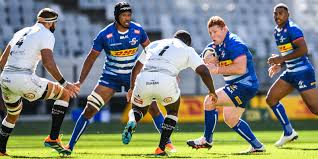Rugby League Head Coach Banned for 18 Months Over Serious Safety Breach
Introduction
In a significant development for the rugby league community, a prominent head coach has been handed an 18-month ban following a serious breach of safety protocols. This decision has sent shockwaves through the sport, raising concerns about player safety and the responsibilities of coaching staff. The implications of this ruling extend beyond the individual, impacting teams, players, and the integrity of the game itself.
**Background of the Incident**
The coach, who has not been named pending an appeal, was found to have violated critical safety protocols during a training session. The breach involved allowing players to engage in high-contact drills without proper protective gear and failing to adhere to concussion management guidelines. This incident occurred during pre-season training, where the emphasis should have been on ensuring player welfare and gradual acclimatization to physical contact.
Eyewitness reports indicated that several players expressed concerns about the lack of safety measures in place. Despite these warnings, the coach continued with the drills, resulting in multiple injuries, including concussions, among team members. The situation prompted immediate scrutiny from the club’s management and an investigation by the rugby league governing body.
**Investigation and Findings**
The governing body conducted a thorough investigation, reviewing training footage, interviewing players and staff, and examining medical reports. The findings were alarming, revealing a pattern of negligence regarding player safety. In particular, the investigation highlighted a disregard for established protocols that are designed to protect players from preventable injuries.
Key findings included:
1. **Lack of Protective Equipment**: Players were not equipped with mandatory safety gear during high-contact drills, increasing the risk of injury.
2. **Failure to Monitor Health**: The coach did not adhere to concussion protocols, allowing injured players to continue participating in drills.
3. **Neglect of Player Concerns**: Players raised valid concerns about safety, which were dismissed by the coaching staff.
The governing body deemed these breaches severe enough to warrant disciplinary action, emphasizing that player safety must be the top priority in all training and game scenarios.
**Consequences of the Ban**
The 18-month ban has far-reaching consequences for the coach and the club. For the coach, this suspension not only halts his career but also raises questions about his future in the sport. The governing body’s decision serves as a stark reminder of the accountability that comes with coaching positions, especially in contact sports like rugby league.
For the club, the impact is multifaceted:
1. **Team Performance**: With the head coach sidelined, the team faces uncertainty in leadership. An interim coach will need to step in, potentially affecting team morale and performance as the season progresses.
2. **Reputation Damage**: The club’s reputation has been tarnished by this incident. Fans, sponsors, and stakeholders may question the organization’s commitment to player safety and welfare.
3. **Financial Implications**: The club may face financial repercussions, including potential fines and loss of sponsorship deals due to the negative publicity surrounding the incident.
**Player Reactions and Concerns**
The response from players within the club and the broader rugby league community has been one of disappointment and concern. Many players have expressed their frustration over the situation, emphasizing that player safety should always come first. Some have called for stricter regulations and oversight of coaching practices to prevent such incidents from occurring in the future.
Players from other teams have also weighed in, with many advocating for increased awareness and education around safety protocols. They argue that while the sport inherently involves risk, it is essential that proper measures are in place to mitigate those risks as much as possible.
**Calls for Reform**
In light of this incident, there have been renewed calls for reform within the rugby league framework. Stakeholders, including former players, coaches, and health professionals, are advocating for:
1. **Stricter Safety Regulations**: Enhanced guidelines for training sessions that prioritize player safety, including mandatory use of protective gear during contact drills.
2. **Education and Training**: Increased training for coaches on safety protocols, particularly regarding concussion management and injury prevention.
3. **Transparent Reporting Mechanisms**: Establishing clear channels for players to voice concerns about safety without fear of retribution.
4. **Regular Audits**: Conducting regular safety audits of training practices to ensure compliance with established protocols.
The Road Ahea
As the rugby league community grapples with the implications of this ban, the focus must remain on player welfare. The coach’s case serves as a critical reminder of the responsibilities that come with leadership in sports. Ensuring that all players can train and compete in a safe environment should be the foremost priority for all involved in the sport.
Looking ahead, it is imperative that the rugby league governing body takes decisive steps to address the issues highlighted by this incident. By implementing reforms and prioritizing safety, the sport can work towards restoring trust among players, fans, and stakeholders.
Conclusion
The 18-month ban of the rugby league head coach for serious safety protocol breaches marks a pivotal moment for the sport. It underscores the vital importance of player safety and the responsibilities that coaches and teams have to uphold these standards. As the community reflects on this incident, the hope is that it will serve as a catalyst for meaningful change, ensuring that the health and safety of players are never compromised in the pursuit of victory.
As the rugby league world watches closely, it remains to be seen how this situation will unfold and what lasting impact it will have on the sport as a whole.

Be the first to comment